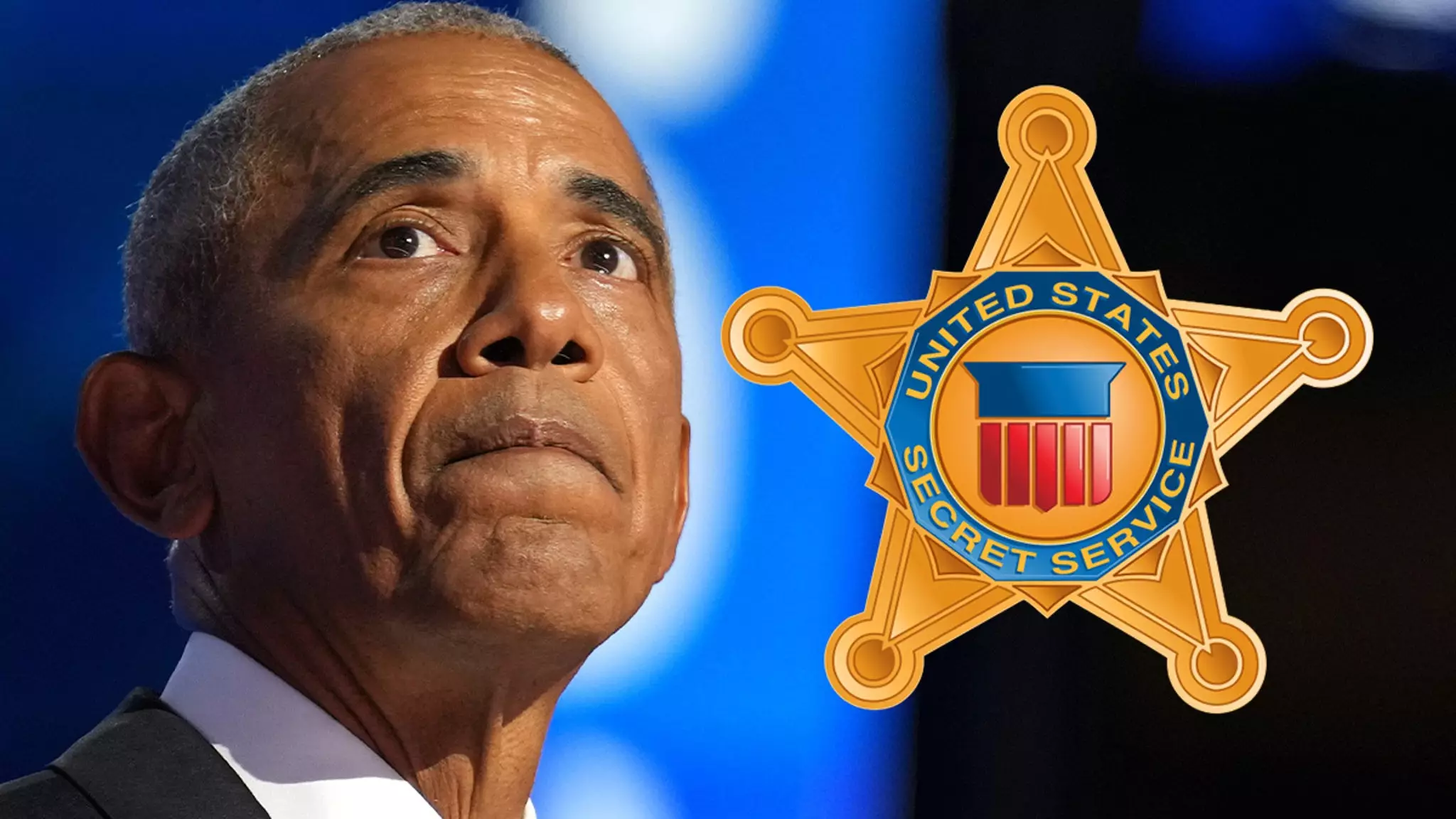In a world where security protocols for high-profile figures are taken with utmost seriousness, the recent incident involving former President Barack Obama has raised significant concerns about the efficacy of the Secret Service’s protective measures. An event that unfolded last weekend in a Hollywood alleyway revealed a glaring lapse in security as an armed security guard was able to approach a vehicle containing the former leader, raising both eyebrows and questions regarding the organization’s competence and operational standards.
On Saturday evening at approximately 7:30 PM, the ambiance outside the trendy restaurant Mother Wolf transformed from a casual outing to a scene of potential danger. The former president was reportedly seated in the back of his SUV when an armed security guard, assigned to a nearby bar mitzvah, ventured into the alleyway to explore a situation he was informed might involve federal agents. Without knowledge of who was inside the SUV he was approaching, the guard took a photograph, mistakenly assuming that he was simply observing the presence of some dignitary.
The startling revelation hit when he stepped closer to the vehicle and recognized Obama engrossed in a laptop, prompting a moment of panic as the reality struck him that he could be misidentified as a threat. Fortunately, the guard quickly moved away from the SUV, intuitively understanding the risks his presence posed given the armed nature of his position. Even after brushing shoulders with Secret Service agents, who appeared startled by his sudden appearance, he credibly noted the lack of apparent security measures shielding the rear of the SUV.
The Secret Service subsequently defended their stance by asserting the absence of guests in the vehicle at the time of the encounter, dismissing the claims as inaccuracies. They emphasized the protocols in place but failed to provide concrete evidence to assuage growing public concerns. What lies at the crux of this issue is not merely a question of protocols but also an urgent call for reevaluation of current security practices, especially in an era where threats can emerge unexpectedly and without warning.
The eyewitness account underscores a chink in the armor of the Secret Service’s operational strategies. The ex-guard articulated the undeniable fact that he could have attempted to open the door of the SUV had his intentions been nefarious—a scenario that, if realized, could have had catastrophic implications not only for Obama but also for the integrity of the Secret Service itself. The incident not only reflects poorly on the elite security agency but also raises questions about their preparedness and responsiveness in managing on-ground situations involving high-profile protectees.
This incident comes on the heels of heightened scrutiny surrounding Secret Service protocols following near-misses with threats against another former president, Donald Trump. As officials grapple with internal reviews and outside backlash over their handling of such situations, public confidence in their ability to protect those entrusted to their care falters. The juxtaposition of these incidents reveals a systemic vulnerability that could undermine the very foundation of protective services designed to keep national leaders safe.
Moreover, the increased accessibility brought about by social media and photography further complicates the landscape of security for high-profile individuals. The ease with which bystanders can capture significant moments can inadvertently expose vulnerabilities in security arrangements. The confluence of social dynamics and security challenges necessitates a reevaluation of traditional practices and methods to ensure that past errors do not dictate future inadequacies.
As events unfold and reviews are conducted, the responsibility lies not only on the shoulders of the Secret Service but also on policymakers to scrutinize and possibly reform existing security measures. Creating an impenetrable safety net for protectees like Obama requires a multifaceted approach that involves engaging with new technologies, enhancing training protocols, and fostering an environment of cooperation among various security agencies.
Through this incident, a crucial dialogue has been initiated about the importance of secure environments for former leaders, thus highlighting the need for vigilance, adaptability, and foresight in securing some of the most vulnerable moments in the lives of those we trust to lead us. Only through comprehensive reforms and an earnest response to the vulnerabilities displayed can confidence in protective services be restored—ultimately securing the safety of former and current leaders alike.

